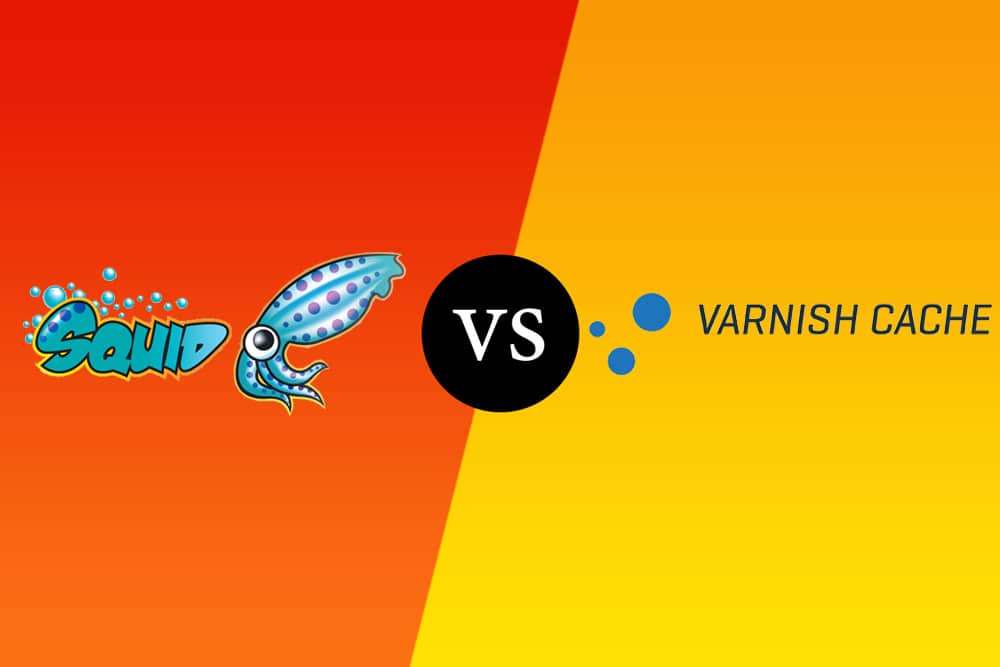
DISCLOSURE: This post may contain affiliate links, meaning when you click the links and make a purchase, we receive a commission.
It’s very important for website hosts to cater to all their traffic needs if they want to prevent congestion and ensure that their customers get the smoothest possible experience. This is where many web hosts choose to opt for proxy services, like Squid and Varnish, that will allow them to control the flow of traffic and resource allocation provided to their servers.
While both Squid and Varnish are equally capable of handling your incoming traffic, many users want to know which service is best suitable for their needs. That’s why we’ve prepared an in-depth comparison, comparing different features of both services to find which has the edge over the other.
What Are Squid And Varnish
Squid and Varnish are both proxy services providing users with various services like caching and traffic load distribution management, which can drastically lower access times and save precious data calls to the parent server.
Squid is a proxy application that has been around for a long time and has established a strong and reliable presence in the market. Its strengths and weaknesses have been well documented, and it has been used by thousands of people to improve their content delivery speeds as well as reduce server load.
At its core, Squid provides content acceleration and distribution services to its users. Next, we have Varnish, which is a much more recent application that came out after Squid and was able to learn a lot from its mistakes. At its core, Varnish is a high-performance content accelerator, speeding up the delivery of your content.
Squid vs Varnish
Now we will be taking a look at the differences between these two softwares and judging which software is preferable in what scenarios. We will be comparing them on the basis of their proxy approach, performance, features, customer support, and pricing.
- Proxy Approach
There is a fundamental difference in the design approach of Varnish and Squid. Varnish is built specifically to facilitate reverse proxy usage and provide HTTP acceleration services. Squid, on the other hand, is a forward proxy that can then be configured to behave like a reverse proxy.
To provide a simple definition, a forward proxy enables computers isolated on private networks to access the public internet while a reverse proxy allows computers on the public internet to access private networks and subnets.
This is why employees working in private firms require the use of forward proxies to perform their everyday tasks. In a corporate environment, reverse proxies allow external users a single entry point into their private networks, which can then be easily monitored.
- Performance
Not to say that Squid is a bad performer or provides unreliable connections, but the idea of Varnish came from the issue of scalability that Squid servers started facing. Most pages will not receive millions of views, so this issue may not be applicable to your website unless it attracts a boatload of traffic.
The issue itself was that Norway’s Newspaper Service had its views hit around 45 million per week and would require the usage of around 12 Squid servers, drastically increasing costs.
Performance remains unacceptably slow regardless, and that’s where Varnish came in to provide a feasible alternative that would solve the proxy stability problem that large, high-traffic websites can face.
- Features
In the features department, both applications provide a variety of interesting options. Squid provides features such as caching pages, DNS lookups, increasing server access speeds, and providing security filters to keep your site secure.
It also makes usage quite easy because of the friendly interface and very easy setup requiring minimum configuration. Moreover, Squid also has a variety of packages that you can choose from depending on your personal preferences.
Varnish, on the flip side, provides a content acceleration service that is extremely fast and will help you load content-heavy websites in the quickest load times. It is also very friendly with API configurations and cross-platform compatibility, allowing you to get the best of both worlds.
The software is obviously dedicated to reverse proxy usage, so it will give you the best performance if you’re searching only for that.
- Platforms
It is important to mention that Varnish is not available for Windows and is catered towards Linux, Unix, and BSD-based systems. Due to this, some users will find that the interface and learning curve for Varnish is much more complex and may not be friendly for beginners lacking technical knowledge.
Squid, on the other hand, receives regular GUI-based updates and comes pre-configured for ease of use on Windows. Users who get it for Windows will be able to immediately jump into usage with the bare minimum technical knowledge.
- Pricing
Pricing for Squid is based on the number of proxies you are buying, and it has no bandwidth limits. Plans range from $24 a month for 10 proxies up to $1,500 for 2,000 proxies. On average, that’s around 0.75$ per proxy. Squid proxies are also slightly limited by the fact that the number of locations you can access depends on the price of your plan.
Varnish Cache, on the other hand, is an open-source project written in C. The fact that it’s open source means the code is also available online, and the use of basic Varnish is free of charge. There is also an enterprise version with added functionalities available for Varnish, costing you around 100$ per month.
Verdict
We will summarize the results of our comparisons below to allow you to conveniently judge which service will be more suited to your needs. It is quite clear that for modern enterprise usage and web pages that see traffic in the millions, Squid will be your best choice, as it can provide both forward and reverse proxy capabilities.
However, if your traffic count is lower and you’re looking for specialized reverse proxy services, or maybe you’re light on the budget, then you can opt for Varnish.
| Category | Squid | Varnish |
|---|---|---|
| Proxy Approach | Forward Proxy that can be configured for Reverse Proxy | Dedicated Reverse Proxy |
| Performance | Can handle large loads of traffic in the millions | Bad at large loads of traffic but provides excellent caching performance |
| Features | Easy to use, secure, fast and has many features | Very Impressive content acceleration service |
| Platform | Windows(check) | Linux, Unix, BSD |
| Pricing | 0.75$ per account | Open Source Free |
Conclusion
We hope this guide was helpful in explaining the different purposes served by Varnish and Squid and how they have developed over the years. With this understanding, hopefully, you will be able to choose your proxy needs, whether they are reverse proxies, forward proxies, or a mix of both.



